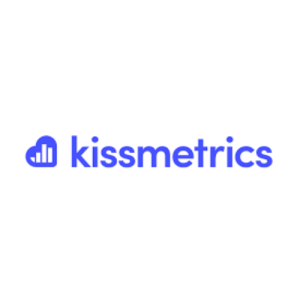Conversion Tracking Tools: Monitoring & Optimizing Campaign Performance
Welcome to our blog on “Conversion Tracking Tools”! In the ever-evolving world of digital marketing, tracking conversions is essential for measuring the effectiveness of your campaigns and optimizing your marketing efforts. Conversion tracking tools provide invaluable insights into user behavior, enabling you to track and analyze key actions that drive desired outcomes, such as purchases, form submissions, or sign-ups.
In this blog, we will explore a variety of conversion-tracking tools to help you gain a deeper understanding of your audience, improve campaign performance, and drive meaningful results. Get ready to unlock the power of conversion tracking and take your marketing to new heights!
What is a Conversion Tracking Tool?
A conversion tracking tool provides a brief overview of what happens after customers interact with your website or marketing campaigns and ads.
Conversion tracking tools are a must-have because, without them, you’ll be unable to judge the performance of your campaigns and make smarter decisions to improve your marketing effectiveness.
What is Traditional Conversion Tracking in Google Analytics?
For a long time, Google Analytics goals have been the go-to solution for tracking conversions, and for a good reason. Google Analytics provides valuable information about website visitors, bounce rates, and the effectiveness of your campaigns in driving conversions. However, it needs more context to understand why visitors take specific actions.
Moreover, Google Analytics could more efficiently track offline conversions, such as phone calls or in-store visits. If your goal is to drive conversions and sales, relying on Google Analytics is not enough.
Google Analytics is great at tracking website clicks, but it needs to catch up when it comes to tracking conversions and understanding the customer journey. It is recommended to integrate Google Analytics with conversion-tracking tools to gain deeper insights and optimize your ads for better results.
Integrating conversion tracking software with Google Analytics allows you to access valuable insights that help you optimize your marketing campaigns online and offline. This combination provides a more comprehensive understanding of your marketing performance and return on investment (ROI).
Using conversion tracking software alongside Google Analytics bridges the gap between online and offline conversions, providing a complete picture of your customers’ actions and behaviors. This enables you to make data-driven decisions and optimize your campaigns to drive better results and increase conversions. All in all, utilizing Google Analytics tips can enhance your understanding of conversion data, enabling you to optimize your campaigns effectively for higher conversions.
Also Read: Best Campaign Budgeting Tools
Things to Consider When Choosing a Conversion Tracking Tool
When evaluating a conversion tracking tool, there are a few things you should look out for to help you get the most value for your money.
Full-Funnel Approach to Conversions
Inspect your technology to see if it can capture the whole customer journey. Investing in a complex system that will disregard more than half of the route is pointless.
Offline Conversion Tracking Capabilities
Making budgeting decisions that affect conversion rates requires complete visibility into the performance of your offline and online channels.
Always check that your conversion tracking solution can easily connect your online and offline data if your company relies on phone calls or other conventional techniques to close deals.
Ability to Integrate with Different Tools
It is good if your conversion monitoring program can connect to your CRM and other reporting tools.
Integrating with your CRM will give you total visibility into your client journey and enable you to use your media budget more wisely.
11 Best Conversion Tracking Tools
Ruler Analytics

Ruler is first on our list. You’ll realize why we may seem biased once you’ve seen it. Ruler is a closed-loop marketing attribution that monitors every anonymous visitor across several sessions, the source of their traffic, and their keyword usage.
Ruler connects the user’s information to their marketing touchpoints after an anonymous visitor converts into a lead and sends the resulting data to your CRM.
As a result, conversion and marketing data are added to the sales team’s system, enabling them to better understand each prospect before contacting them.
Revenue information is automatically pushed back into the Ruler Analytics dashboard when a lead becomes a customer or a sale is made. In this case, the crucial touchpoints to the transaction are to blame.
You can integrate this revenue data with Google Ads, Analytics, and more to measure marketing ROI straight from the reporting tools you use daily.
- Customer journey tracking: View exactly which marketing channels and pages your visitors engage with before converting into a lead or sale.
- Marketing attribution: Automatically attributes revenue to the marketing source and touchpoints that played a role in converting leads into deals.
- Opportunity attribution: Tracks and streamlines your sales pipeline so you can focus on the marketing channels with the greatest impact on your opportunities.
- Offline conversion tracking: Measure which marketing tactics resulted in offline sales or other valuable customer actions.
- Live chat tracking: Matches live chat conversion events to the click that drove the interaction.
Pricing:
- The Ruler starts at £349 a month. You can save 20% by paying annually, and there are also discounted rates for agency partners.
Adinton

Adinton tracks your marketing expenditures, clicks, and conversions, then provides data on how each channel performed and, more importantly, whether you are investing too little or too much.
After the data has been gathered, Adinton guides enhancing the effectiveness of your campaigns and using your marketing resources most efficiently.
Price:
- From $79/month
Best for:
- All-in-one suite of marketing tools.
Also Read: Best Collaboration Tools and Software to Use
Adjust
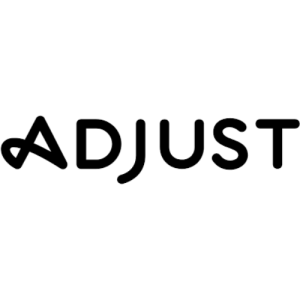
Adjust is a powerful platform designed to enhance the functionality of your mobile applications. You may trace which advertisements resulted in conversions with this tool, right down to the ad creatives your users saw.
They immediately connect with more than 2,000 advertising partners, making it easy for you to set up and start collecting campaign data.
Price:
- Available on request
Best for:
- Businesses that revolve around a mobile app.
Adobe Analytics
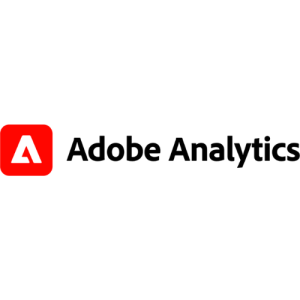
Another analytics tool you can use to keep tabs on website traffic and conversions is Adobe. You may drag and drop data visualizations using Omniture’s versatile user interface for efficient reporting.
Price:
- Available on request
Best for:
- Enterprise Companies that want to know how their users engage with their products and services.
Funnel.io

With a funnel, you can rapidly evaluate all the campaign data from each channel in one location, allowing you to assess which channel generated the most profitable conversions.
Using this tool, you can easily review your campaign data across all channels, helping you spend your media budget more wisely.
Additionally, you may import the data into Google Analytics, Sheets, and Google Data Studio.
Price:
- Available on request
Best for:
- Businesses that revolve around a mobile app.
Google Analytics
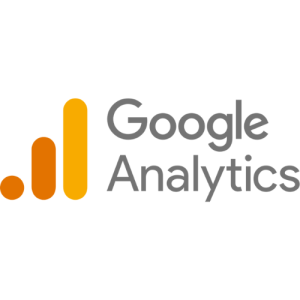
The most popular web analytics tool for tracking website traffic. Google Analytics can show you what happens to customers when they interact with your advertisements, including whether they buy something, subscribe to your email, phone your company, or download an app.
Price:
- Free
Best for:
- All data-driven marketing teams.
Heap
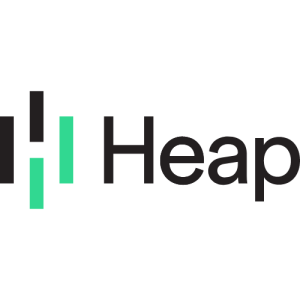
Without any conversion-tracking code, Heap automatically records all user interactions across iOS and Web apps. It lets you measure data in detail and monitor how certain people use your services.
Price:
- Available on request
Best for:
- Non-technical teams.
Also Read: Best App Store Optimization Tools
KissMetrics
A behavioral analytics tool called KissMetrics generates unique IDs for each website visitor and tracks interactions such as clicks, pages visited, and conversions. It provides important insights into the marketing strategies that drive the highest-value conversions for your company.
Price:
- From $299.00 per month
Best for:
- SaaS and eCommerce businesses.
Matomo Analytics

Matomo, formerly known as Piwik, is an open-source analytics platform that offers both cloud and on-premise hosting options. Many of the sophisticated capabilities you’d expect from an analytics platform, including conversion monitoring, are included in Matomo, which is easy to set up.
Price:
- Free and paid
Best for:
- All data-driven marketing teams.
Mixpanel

A/B testing, predictive analytics, and conversion monitoring are all provided by Mixpanel. Users can examine how and why their users engage, convert, and remain across web, mobile, and smart device platforms using a service like Mixpanel.
Price:
- Free and paid
Best for:
- Businesses interested in learning more about how customers interact with their goods and services can benefit greatly from customer interaction analysis. This process involves collecting and analyzing data on customer behavior, preferences, and actions to gain insights into their interactions with the business.
- Customer interaction analysis can be conducted through various methods, such as surveys, interviews, feedback forms, social media monitoring, website analytics, and transactional data analysis. By examining these interactions, businesses can understand customer needs, preferences, pain points, and satisfaction levels.
- The insights from customer interaction analysis can help businesses make informed decisions about product development, marketing strategies, customer service improvements, and overall business growth. It enables businesses to tailor their offerings to meet customer expectations, identify areas for improvement, and enhance the overall customer experience.
Webtrends

Webtrends is another analytics tool that provides useful insights to drive sales and consumer engagement.
It revolutionizes how you interact with your consumers by giving you more control over audience segmentation, driven by data tracking and customer behavior.
Price:
- Enterprise package from $900/month
Best for:
- Enterprise Companies that want to know how their users engage with their products and services.
Also Read: How to Create a Customer Journey Map Template
Conclusion
Congratulations on completing our comprehensive guide on conversion tracking tools! By utilizing these powerful tools, you can track and optimize conversions, gaining valuable insights into your marketing performance. Remember, effective conversion tracking is an ongoing process that requires continuous monitoring, analysis, and optimization. Keep experimenting with different tracking methods, refining your strategies, and adapting to changing market dynamics. By leveraging conversion tracking tools, you can make data-driven decisions, optimize your campaigns, and achieve higher conversion rates. Best of luck in your journey to maximize your marketing efforts and drive successful conversions!
FAQs:
What are conversion tracking tools?
Conversion tracking tools are software or online services that allow marketers to track and measure users’ actions on their websites or landing pages that lead to desired outcomes, such as purchases, form submissions, or sign-ups. These tools provide valuable data and insights into user behavior, enabling marketers to evaluate the effectiveness of their marketing campaigns.
Why is conversion tracking important?
Conversion tracking is crucial because it helps marketers understand the impact of their marketing efforts. Marketers can identify which channels, campaigns, or keywords are driving the most valuable actions by tracking conversions. This information enables them to allocate resources effectively, optimize campaigns, and maximize their return on investment (ROI).
What types of actions can be tracked with conversion tracking tools?
Conversion tracking tools can track various actions depending on the marketer’s goals. Common actions include online purchases, form submissions, newsletter sign-ups, app downloads, phone calls, and website registrations. Conversion tracking tools provide insights into the number of conversions, conversion rate, and other relevant metrics associated with these actions.
How do conversion tracking tools work?
Conversion tracking tools typically involve placing a tracking code or pixel on the website or landing page. This code collects user interaction data and sends it back to the tracking tool’s platform. Marketers can then access this data to analyze conversions, attribute them to specific campaigns or channels, and make data-driven decisions to optimize their marketing strategies.
What are some popular conversion tracking tools?
Several popular conversion-tracking tools are available on the market. Google Analytics offers robust conversion tracking capabilities and integrates with various platforms. The Facebook Pixel is widely used to track conversions from Facebook ads. Other notable tools include Hotjar, Mixpanel, and Kissmetrics. Choosing a tool that aligns with your specific tracking needs and integrates well with your marketing channels and platforms is important.

